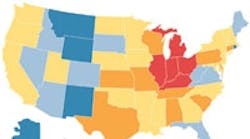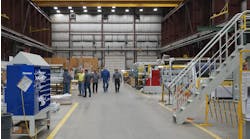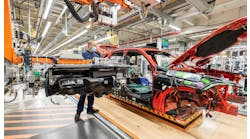Despite the downfall of the U.S. auto industry, the Midwest remains the nation's top region for imports and exports, say Ball State University researchers in the "Manufacturing and Logistics 2009" report card.
The study ranks Illinois, Indiana, Kentucky, Michigan and Ohio as the top five states for international trade. Although the data are not recent enough to capture the most current restructuring efforts by the Detroit Three automakers, the region should remain a key player for global activity in the years to come, says Michael Hicks, director for Ball State's Center for Business and Economic Research, which conducted the report. "The Midwest is still the place where automobiles and parts are going to be manufactured," he says. "Even a retooled auto industry is still going to be making automobiles."
The report graded each state in six areas of the economy, including logistics health, human capital, the cost of benefits, the global position of manufacturers, state-level productivity and innovation, and the tax climate.
The researchers determined global reach by collecting data from the Commerce Department's International Trade
Administration. Some of the data included measures of per-capita exported manufacturing goods, manufacturing income received from foreign-owned firms in a state and the reach of foreign direct investment.
The top-ranked states for human capital, defined as the quality and availability of labor, were widely dispersed nationwide. Minnesota, New York, Utah, Washington and Wyoming led the way. States receiving "F" grades in the area of employment include Alabama, Louisiana,
Nevada, Texas and West Virginia.
The states shown in red received "A" grades for their roles in international trade.
As for the benefits and wages costs, Alabama, Arizona, Idaho, South Dakota and Utah provide the best environment for manufacturers. The benefits measured range from a variety of healthcare issues to liability and casualty insurance, workers' compensation costs and fringe benefits.
The areas of productivity and innovation and tax climate could see some dramatic shifts in the near future, says Hicks. The recession should prompt many states to re-evaluate their tax environment, and statewide policies aimed at creating venture capital could create new business opportunities, Hicks says.
See Also




